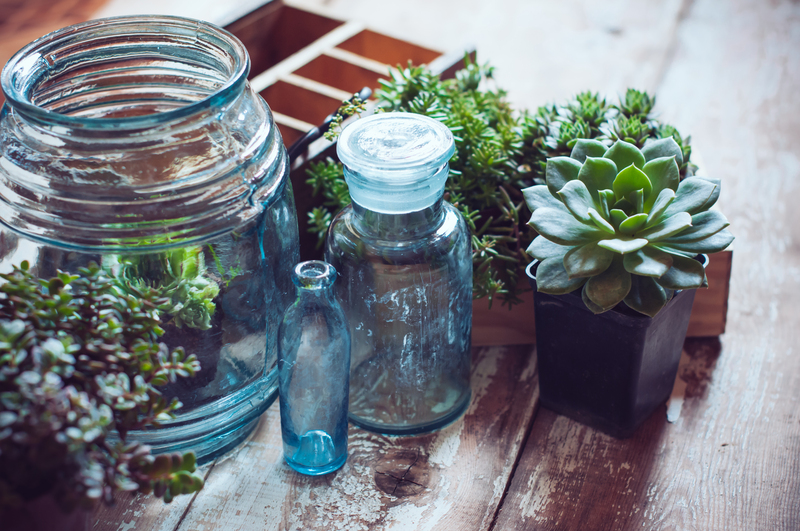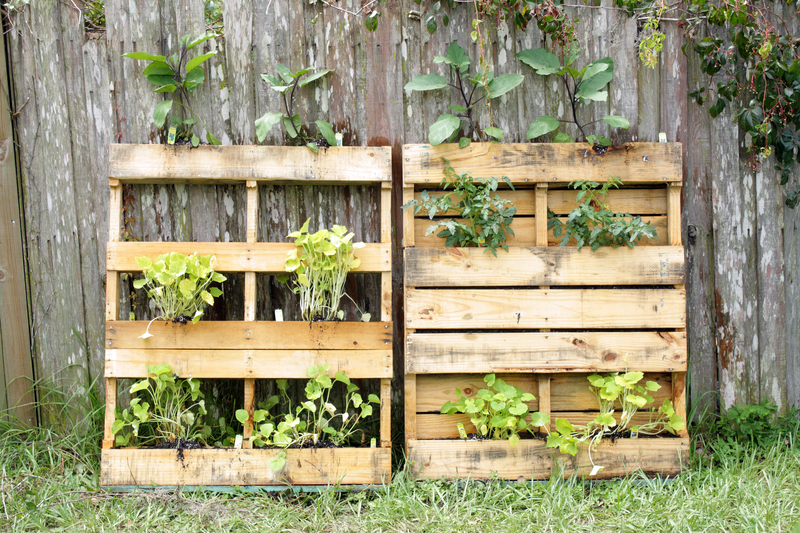Upcycled Artistry: Transforming Discarded Materials Into Masterpieces
Upcycled artistry has become a stirring movement in the worlds of art, sustainability, and environmental consciousness. More than just a creative outlet, it is both a statement and a solution--a way for artists, communities, and businesses to reimagine waste and celebrate human ingenuity. In this comprehensive article, we delve into the world of transforming discarded materials into breathtaking masterpieces, exploring the techniques, inspirations, environmental impacts, and future of upcycled art.
What Is Upcycled Artistry?
Upcycled artistry refers to the process of converting discarded, unwanted, or obsolete materials into works of art that are both aesthetically pleasing and often functional. Unlike traditional recycling, which breaks down materials to their raw state, upcycling maintains much of the original material, giving it new life and purpose. This creative process is sometimes known as transformative art, recycled art, or eco-conscious craftsmanship.
Key Aspects of Upcycled Artistry
- Creativity: The ability to envision beauty and meaning in what others see as waste.
- Sustainability: Reducing landfill waste and carbon footprint by reusing resources.
- Storytelling: Every piece has a history, often tied to environmental awareness or social issues.
- Community Impact: Inspiring others and supporting local economies through handmade crafts.

The History and Evolution of Upcycled Art
The concept of turning trash into treasure is far from new. From folk artists using bottle caps and scrap wood to renowned contemporary sculptors making international headlines, upcycled artistry has deep roots. Ancient civilizations repurposed broken pottery or worn textiles, but the modern upcycling movement blossomed alongside growing environmental concerns in the late 20th and early 21st centuries.
The Modern Upcycling Renaissance
The 21st century has witnessed an explosion of interest in transforming discarded materials into masterpieces. This renaissance is fueled by:
- Eco-awareness and the fight against climate change
- Social media, which allows artists to share their work worldwide
- Support from galleries embracing sustainable art forms
- Cross-pollination with maker culture and DIY movements
Common Materials Used in Upcycled Art
The beauty of upcycled masterpieces lies not just in their artistry but in the striking diversity of materials used. Here are popular discarded materials often found in eco-friendly artwork:
- Plastics: Bottles, packaging, straws, and bags are reinvented as sculptures, wall art, and jewelry.
- Metal: Scrap metal, wires, and old tools become bold industrial pieces or refined desktop art.
- Wood: Pallets, broken furniture, and driftwood are revived as installations or carvings.
- Textiles: Old clothes, fabric scraps, and even yarn from unravelled sweaters inspire wearable and decorative art.
- Glass: Discarded bottles, windows, and jars add color and transparency to mosaics and mixed-media pieces.
- Paper & Cardboard: Newspapers, magazines, and boxes are reimagined as collages or structural elements.
- Electronics: Obsolete gadgets, keyboards, and circuit boards are transformed into intricate, futuristic artworks.
Techniques Artists Use to Create Upcycled Masterpieces
Transforming waste into wonder requires a unique set of skills and techniques. Upcycling artists harness both traditional craftsmanship and experimental methods. Here are some of the most notable upcycled art techniques:
- Assemblage: Joining disparate objects to form cohesive pieces, from wall art to 3D sculptures.
- Decoupage: Applying layers of paper or fabric to surfaces, often sealed with glue or varnish.
- Collage: Layering different materials to create rich, textured images or abstract art.
- Welding and Metalwork: Reshaping and connecting metal items, vital for upcycled industrial sculptures.
- Sewing and Quilting: Recombining textile scraps into unique garments or decorative works.
- Sanding, Painting, and Finishing: Prepping surfaces and adding color or protective finishes for lasting impact.
- Weaving and Braiding: Repurposing plastics, papers, or cloth into strong, intricate designs.
- Carving and Reshaping: Fashioning wood, plastics, or foam into new forms that defy their former lives.
The Environmental and Social Impact of Upcycled Artistry
At the heart of art from recycled materials is a commitment to environmental stewardship. Each upcycled masterpiece represents not only artistic achievement but also a small victory for the planet. Let's explore the positive impacts:
Reducing Waste in Landfills
Every year, millions of tons of waste--plastic, wood, metal, electronics--end up in landfills or oceans. By reclaiming these materials, upcycled artists actively reduce the burden on nature. Each piece is a testament to the value hidden in what we throw away.
Inspiring Environmental Awareness
Upcycled artwork often tells a story. A sculpture made from ocean plastics can spark conversations about pollution, prompting viewers to consider their own consumption and disposal habits. Through creative advocacy, upcycled artists raise awareness about urgent environmental issues.
Strengthening Communities and Local Economies
Many upcycled artists work within their communities, sourcing materials locally and often collaborating with schools, nonprofits, or public institutions. This not only reduces environmental impact but also:
- Supports local artisans and entrepreneurs
- Provides skill-building opportunities and employment
- Engages citizens in creative environmental action
Notable Upcycled Artists and Projects
Upcycled artistry has produced some of the contemporary art world's most exciting voices. Artists worldwide are gaining recognition for their innovative use of found materials. Here are a few inspiring examples:
- Vik Muniz: The Brazilian artist is famous for creating stunning portraits from trash, including the acclaimed "Pictures of Garbage" series.
- Michelle Reader: A UK-based sculptor, Reader crafts dynamic figures using household waste and mechanical parts.
- Bordalo II: This Portuguese street artist uses recycled plastics and metal to construct colorful, oversized animal murals.
- Ptolemy Elrington: He transforms discarded hubcaps into intricate animal sculptures, highlighting the lifecycle of automotive waste.
- Washed Ashore Project: An ongoing community-driven project in Oregon turning beach plastics into giant marine animal installations to raise awareness about ocean health.
How to Start Your Own Upcycled Art Projects
Creating your own upcycled masterpieces is a rewarding way to explore personal creativity and make a positive environmental impact. Here's a step-by-step guide to getting started:
-
Collect Discarded Materials:
Gather interesting items from your home, workplace, or neighborhood. Look for variety--metal, wood, glass, fabric, and plastic all offer unique possibilities. -
Get Inspired:
Search online for examples of upcycled artistry, visit local galleries, or join social media groups focused on eco art or DIY upcycled crafts. -
Plan Your Artwork:
Sketch out ideas or experiment with arrangements of your materials before committing to glue, weld, or sew. -
Choose Techniques:
Decide which methods (collage, assemblage, painting, sewing) best suit the materials and your vision. -
Build and Finish:
Use tools safely, assemble the components, and add finishing touches--paint, varnish, or protective coatings as needed. -
Share and Display:
Exhibit your art at local fairs, post on social media, or donate pieces to support environmental organizations.
Tip: Remember, there are no mistakes in upcycling--only new directions and creative discoveries!
Upcycled Art in Interior Design and Architecture
The use of reclaimed materials in large-scale installations and functional pieces is transforming how we think about interior spaces and buildings. Designers and architects now routinely incorporate elements like:
- Furniture crafted from pallets, shipping crates, or old doors
- Decorative wall panels using scrap wood, metals, or textiles
- Lighting fixtures fashioned from bottles, tin cans, or bicycle parts
- Entire homes built using shipping containers or salvaged materials
Not only do these choices lower building costs and reduce waste--they also add a one-of-a-kind character and charm that new materials simply cannot replicate.
Challenges and Opportunities in Upcycled Artistry
While exciting, working with discarded materials presents several challenges. Artists and designers must contend with:
- Material safety and cleanliness: Thorough cleaning or treating items before use
- Structural integrity: Ensuring durability in both artistic and functional pieces
- Perception: Overcoming the stigma that "art from trash" lacks value or professionalism
- Supply: Consistent access to quality discarded materials
However, these challenges spark innovative solutions and have led to new markets for upcycled products, collaborations with tech and recycling industries, and the integration of advanced tools like 3D printing with recovered plastics.

The Future of Upcycled Masterpieces
The future of upcycled artistry is bright and bursting with possibility. As public awareness of environmental issues grows and demand for sustainable practices intensifies, we can expect to see:
- Greater mainstream acceptance: Upcycled works gaining status among collectors, museums, and interior designers
- Integration with technology: Digital tools aiding design and production, expanding what's possible with waste materials
- Cross-discipline collaborations: Artists, scientists, engineers, and community leaders working together for creative solutions
- Broader educational outreach: Schools adopting upcycling into their arts and environmental curriculums
- Commercial growth: Eco-friendly brands using upcycled art in marketing or product design
Conclusion: The Enduring Power of Upcycled Artistry
Upcycled artistry is more than a creative trend--it is a movement rooted in hope, innovation, and sustainability. Whether through dramatic public sculptures or humble home projects, the transformation of discarded materials into masterpieces challenges our perceptions of value and beauty. It reminds us that in a world of seeming abundance and waste, imagination can turn the overlooked into the unforgettable.
As the demand for sustainable living grows and waste reduction becomes a global priority, upcycled art will continue to inspire, provoke, and unite people of all backgrounds. Every masterpiece created from discarded materials is not just a personal triumph, but a collective step toward a more responsible and beautiful world.
Ready to start your own journey? Gather your discarded treasures--and let your creativity redefine the art of what's possible!
